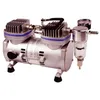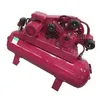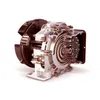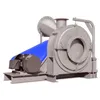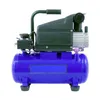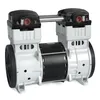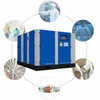An Air Compressors is a mechanical device that converts power into potential energy stored in pressurized air. It is widely used in various industries, from automotive to manufacturing, and even in home applications. Understanding the types, parameters, and functionalities of air compressors is essential for making an informed purchase decision.
Air compressors come in several types, each suited for different applications. The main categories include:
When selecting an air compressor, consider these critical parameters to ensure it meets your needs.
| Parameter | Description | Typical Range |
|---|---|---|
| CFM (Cubic Feet per Minute) | Measures the volume of air delivered by the compressor. | 5 to 200 CFM |
| PSI (Pounds per Square Inch) | Indicates the pressure output of the compressor. | 90 to 175 PSI |
| Horsepower (HP) | Reflects the power of the motor driving the compressor. | 1 to 30 HP |
| Tank Size (Gallons) | Determines the amount of air storage available. | 1 to 80 gallons |
| Noise Level (dB) | Measures the sound output during operation. | 40 to 90 dB |
Air compressors are versatile tools used in numerous fields. Here are some common applications:
Here are some frequently asked questions about air compressors, answered in detail.
What is the difference between a single-stage and two-stage air compressor?
A single-stage compressor compresses air in one step, making it suitable for lower pressure applications up to 150 PSI. A two-stage compressor compresses air in two steps, allowing for higher pressures (up to 200 PSI) and better efficiency, ideal for continuous use in industrial settings.
How often should I change the oil in my oil-lubricated air compressor?
For oil-lubricated compressors, it is recommended to change the oil every 500 to 1000 hours of operation, or as specified by the manufacturer. Regular oil changes help maintain performance and extend the compressor's lifespan by reducing wear and tear.
What maintenance does an air compressor require?
Routine maintenance includes checking and changing the oil (for oil-lubricated models), draining the tank to remove moisture, inspecting and replacing air filters, and checking for leaks. Always refer to the user manual for specific maintenance schedules.
Can I use an air compressor indoors?
Yes, but ensure proper ventilation to avoid carbon monoxide buildup if using a gas-powered compressor. Electric models are safer for indoor use. Also, consider noise levels and use hearing protection if necessary.
What size air compressor do I need for my home garage?
For typical home garage tasks like inflating tires or using pneumatic tools, a compressor with 5-10 CFM at 90 PSI and a 20-30 gallon tank is sufficient. Choose based on the highest CFM requirement of your tools.
How do I reduce moisture in my compressed air system?
Install an aftercooler, air dryer, or moisture trap in the system. Regularly draining the tank and using desiccant dryers can also help reduce moisture, which is crucial for applications requiring dry air to prevent tool damage.
Are oil-free air compressors better than oil-lubricated ones?
Oil-free compressors are low-maintenance and ideal for applications where oil contamination is a concern, such as medical or food industries. However, they may be louder and have a shorter lifespan compared to oil-lubricated models, which are more durable and efficient for heavy-duty use.
What safety precautions should I take when using an air compressor?
Always wear safety glasses and hearing protection. Ensure the compressor is on a stable surface, and never exceed the recommended PSI for your tools. Regularly inspect hoses and connections for leaks, and follow all manufacturer guidelines for operation and maintenance.
